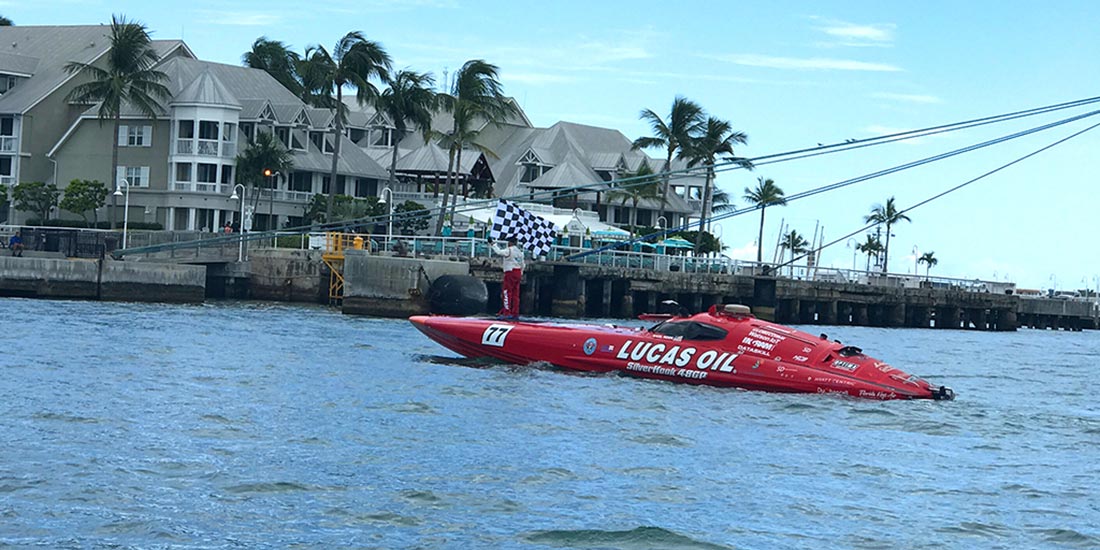This is a re-post of the original article written by Nigel Hook for IBM. The original article can be found here!
On August 17, 2017, the 48-ft. SilverHook powerboat broke the endurance world record from Key West to Cuba, traveling 103 miles through the Florida Straights in 1 hour, 18 minutes and 3 seconds. Average speed was 79.23 mph and top speed 127 mph.
As the captain of the SilverHook Powerboat Team, and throttleman beside driver Jay Johnson in the boat, I found this extremely exhilarating. It was the culmination of my lifelong passion for ocean racing—and of a vision to transform our sport by collecting, analyzing and sharing data in real-time.
I grew up in England in a family that had designed, built and raced boats, and since I was a toddler the sport hooked me, to see how far and fast we could go on the ocean. Due to the currents and weather, the Key West to Cuba run is one of the most unpredictable stretches of water in the world. That’s why we accepted the challenge—not only to prove that SilverHook is the fastest monohull on the ocean, but to prove our technology.
Transforming ocean racing with Watson IoT
For the past five years, we’ve applied analytics, the Internet of Things (IoT), cloud computing and telemetry to our boat to help us travel faster and more safely. The technology also transforms ocean racing into a spectator sport so that any fan with an internet connection can monitor our cockpit for speed, fuel burn, course, the pilot’s vital signs and other metrics as they happen.
SilverHook’s technological journey began with business analytics. After collecting data from the boat’s systems such as the GPS and accelerometer, our engineers would analyze it after the race to learn what happened and how to improve. On-the-water analysis presented a special problem, because pilots are too focused on racing to analyze data on their own. We needed a way communicate to shore and back during the race. The answer was point-to-point VHF radio, which allowed on-shore analysts to receive sensor data and advise the pilots as needed.
The biggest breakthrough came two years ago through the artificial intelligence of the IBM Watson IoT Platform. With its ability to analyze and learn from the boat’s many sensors, weather forecasts and other real-time data sources, along with volumes of maintenance histories and service notes, the platform helps to optimize nearly every system so we can drive faster, more reliably and more safely than ever before.
Dream team of partners help break world record
We also perfected our ACUMI t3 telemetry, using satellite communications to send data from the boat to the IoT platform and back through the IBM Bluemix cloud– a real achievement given the rugged environment of a powerboat pitching and rolling through ocean waves. And we programmed Watson to automatically “whisper” its alerts to the pilots through a helmet earpiece.
A dream-team of partners traveled with us on this journey. DataSkill, a technology integrator, skillfully tapped the power of IBM’s cloud and cognitive technology; Ingram Micro assisted with technology distribution and support; and our satellite partners, Inmarsat, Globecomm and Satcom Direct, helped to link our systems to the cloud in real time.
People say that barriers aren’t often broken. Innovative technology helped us break the world record and transform our sport. We hope this accomplishment inspires others to personal breakthroughs of their own.
To learn more about the data behind SilverHook’s success, read Part 2 of this blog here!

